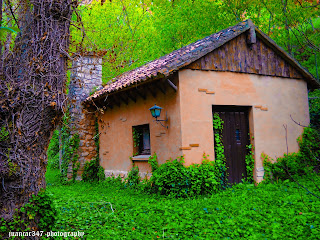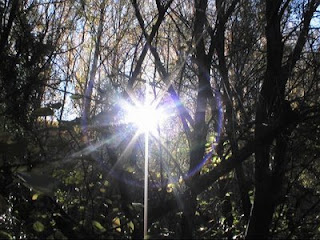Noya: el cementerio de las losas olvidadas / Noya: the cemetery of forgotten slabs
Sin duda, uno de los lugares más singulares y misteriosos de
esa Galicia, céltica y ancestral, que todavía se obstina en rendir cumplida
devoción a sus antiguos mitos y tradiciones, es ésta hermosa villa marinera de
la Costa de la Muerte, a la que la Tradición, bendito tesoro donde los haya, la
otorga la gracia de haber sido fundada, nada más y nada menos, que por una de
las nietas del patriarca bíblico, Noé, después de que las aguas volvieran a su
cauce, formando nuevas tierras, a consecuencia de aquel brutal cataclismo,
conocido como el Diluvio Universal.
Pero Noya, además, me recuerda también el singular cementerio de los libros olvidados, que el escritor, Carlos Ruiz Zafón, situó en el corazón del Barrio Gótico de Barcelona, con la excepción de que aquí, los libros se transforman en singulares losas sepulcrales, que se amontonan sin ton ni son a la vera del cementerio de la iglesia de Santa María a Nova y que, no habiendo servido nunca para proteger las últimas vergüenzas de un ser humano, detallan, no obstante y como las páginas de un críptico grimorio medieval, una singularidad de símbolos y epigrafías, que, como los números que son fechas y las iniciales que son nombres, de Antonio Machado, delatan una historia, cuyo sentido, todavía, al cabo de los siglos, no hemos podido nunca descubrir.
Without a
doubt, one of the most unique and mysterious places in that Celtic and
ancestral Galicia, which still persists in paying full devotion to its ancient
myths and traditions, is this beautiful fishing village on the Coast of the
Death, to which Tradition, a blessed treasure if there is one, is granted by
the grace of having been founded, by none other than, by one of the
granddaughters of the biblical patriarch, Noah, after the waters returned to
their channel, forming new lands, consequence of that brutal cataclysm, known
as the Universal Flood.
But Noya
also reminds me of the unique cemetery of forgotten books, which the writer,
Carlos Ruiz Zafón, located in the heart of the Gothic Quarter of Barcelona,
with the exception that here, the books are transformed into singular
tombstones, that pile up without rhyme or reason on the edge of the cemetery of
the church of Santa María a Nova and that, having never served to protect the
last shames of a human being, nevertheless detail and like the pages of a
cryptic medieval grimoire , a singularity of symbols and epigraphies, which,
like the numbers that are dates and the initials that are names, by Antonio
Machado, reveal a story, whose meaning, even after centuries, we have never
been able to discover.









Comentarios